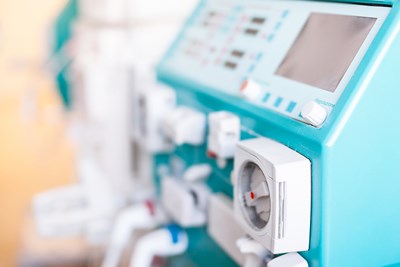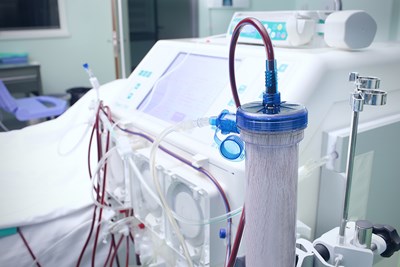Normally, the kidneys are responsible for filtering blood and removing harmful waste products and excess fluid by turning them into urine to be passed through the body. Dialysis is a procedure that is used to remove waste and excess fluid from the blood when the kidneys are not working properly. Though dialysis can be a lifesaving technique, it doesn’t come without risks and side effects. There are two different types of dialysis that have different risks associated with them.
Side Effects of Hemodialysis
Hemodialysis is the most common type of dialysis. It involves removing blood from the body, filtering it through a machine, and then replacing it back into your body using tubes on your arms. The potential side effects of hemodialysis include:
- Hypotension: Low blood pressure is a common side effect of hemodialysis, especially for patients with diabetes. This could lead to symptoms such as shortness of breath, abdominal cramps, nausea, and vomiting.
- Itching: For some reason, it is common to experience itchy skin as a result of hemodialysis. This usually occurs during or right after the procedure.
- Bone diseases: Sometimes damaged kidneys can cause problems with processing vitamin D. If you are unable to absorb calcium, this will lead to weakening of the bones that could cause other complications.
- Fluid overload: You have a recommended amount of fluids that you are supposed to drink between treatments. If you exceed this amount, this could lead to life-threatening complications such as heart failure or pulmonary edema.
- Hyperkalemia: This is a condition that occurs when your potassium levels are too high. Since potassium is a mineral that is usually removed by the kidneys, you have to make sure not to eat more than the recommended amount, as too much potassium could potentially cause your heart to stop.
- Amyloidosis: This is a potential complication for people who have undergone dialysis for more than five years. It occurs when the proteins in the blood are deposited on the joints and tendons, which causes pain, stiffness, and fluid in the joints.
- Access site complications: Infection, narrowing, or ballooning of a blood vessel wall are all potentially dangerous complications of hemodialysis.
- Pericarditis: This is an inflammation of the membrane that surrounds the heart, and it can occur as a result of insufficient hemodialysis.
- Hypertension: High blood pressure is a potential side effect of hemodialysis if you are consuming too much salt or drinking too many fluids. High blood pressure increases your risk for heart problems and stroke.
- Anemia: Anemia is a condition that occurs when you don’t have enough red blood cells and is a common complication of hemodialysis.
- Sleeping problems: Sleep apnea and restless legs are common problems that arise because of hemodialysis and can lead to troubles with your sleeping patterns.
- Muscle cramps: For unknown reasons, many people undergoing hemodialysis experience muscle cramps.
Side Effects of Peritoneal Dialysis
This dialysis method uses the inside lining of your abdomen as the filter for your blood rather than a machine. An incision is made near your belly button, and a thin tube is inserted through the incision and into the peritoneal cavity in your abdomen where it is left permanently. This method, though less common, may be appealing to some because it can be done from home and doesn’t come with as many side effects and risks. The side effects for this type of dialysis include:
- Infections: This is the most common problem that arises from peritoneal dialysis. Infections can develop at the site where the catheter is inserted to carry the fluids into and out of your abdomen.
- Hernia: Holding fluid in your abdomen for long periods of time can strain the muscles in your stomach, which could increase your risk for developing a hernia.
- Weight gain: The fluid that is used to clean your blood contains sugar, which could cause you to take in several hundred extra calories per day by absorbing the fluid. This could result in weight gain.



